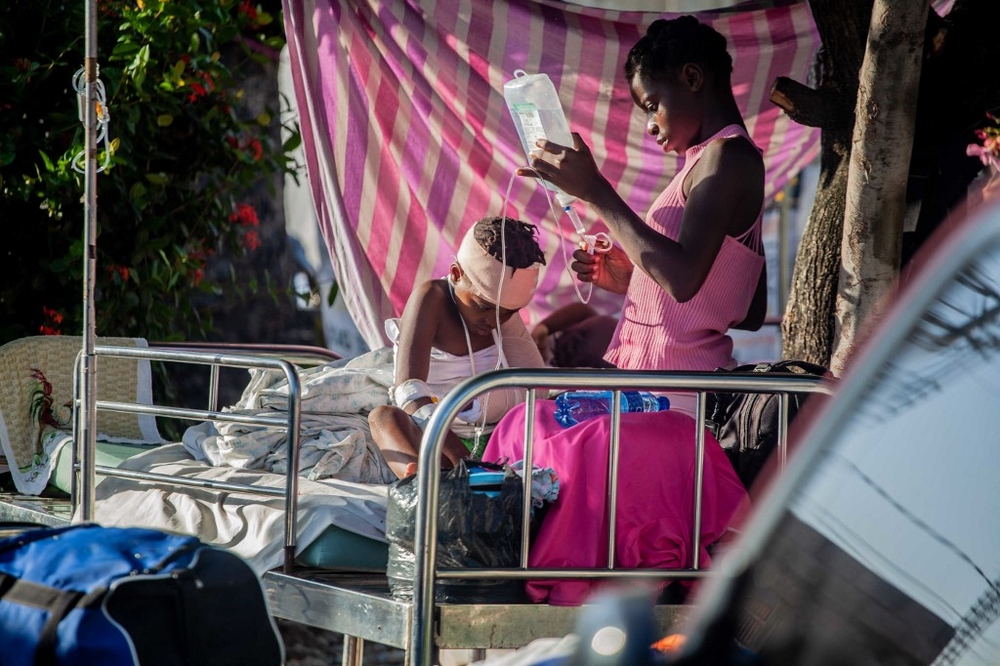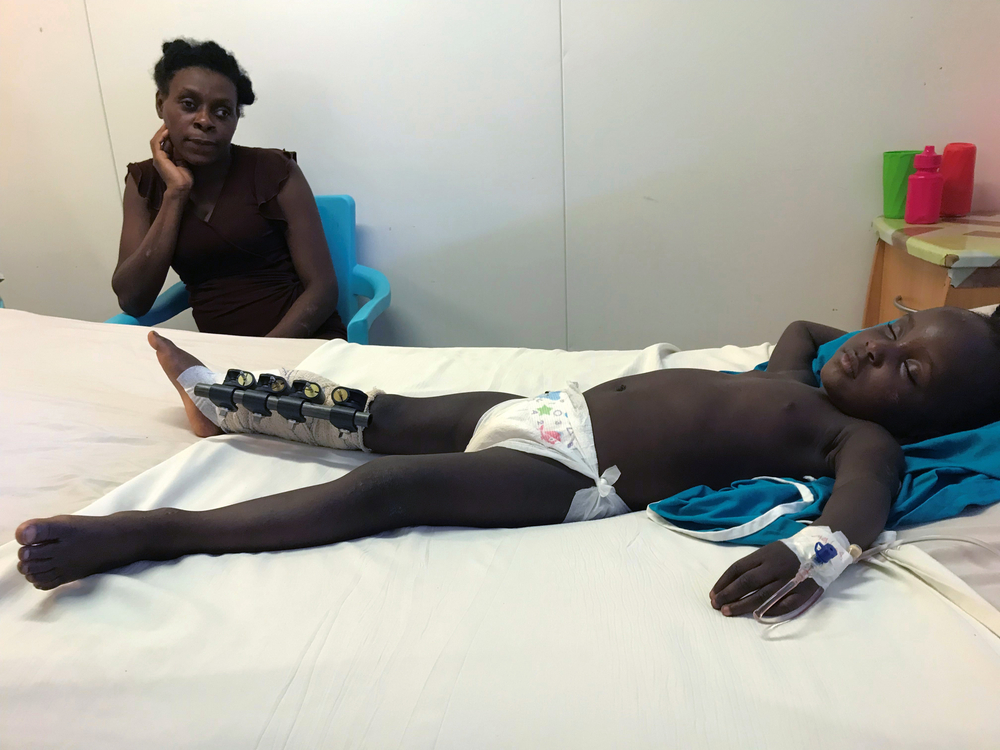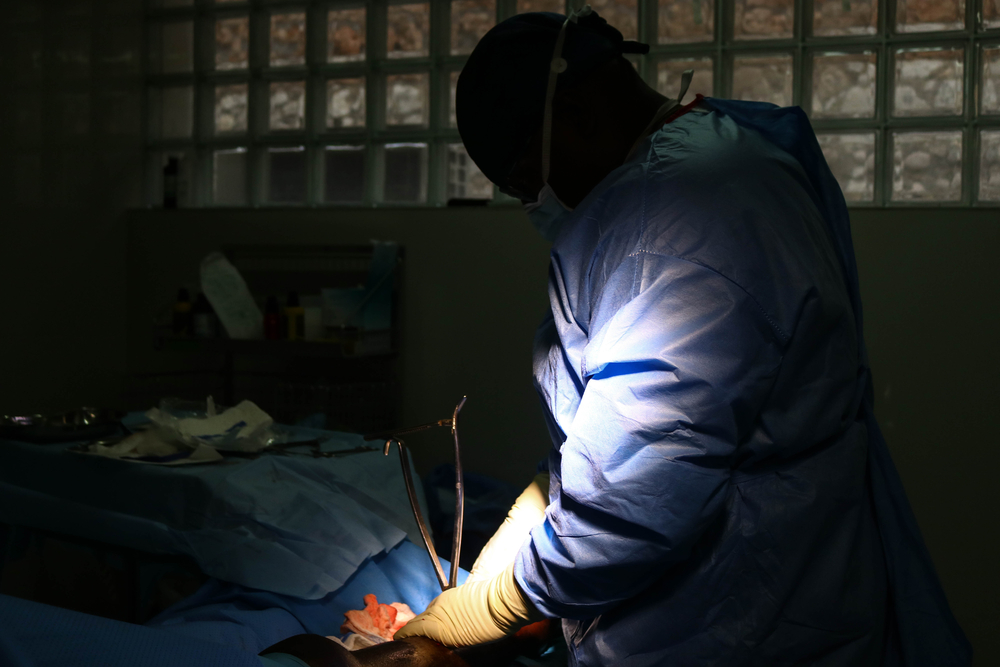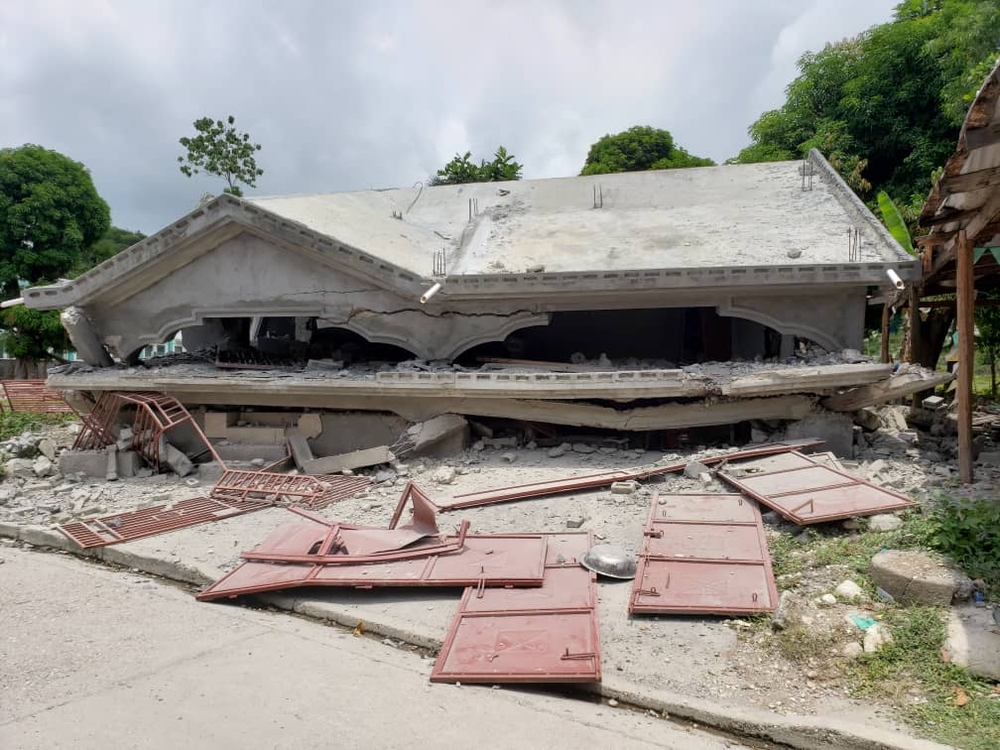The 7.2 magnitude quake began at 8:29 am local time on 14 August and ended a few minutes later. In those terrible moments, as walls and roofs collapsed in hard-hit areas of southern Haiti, more than 2,200 people were fatally wounded, and more than 12,000 people were injured. Survivors such as Widnika began a long journey of recovery from physical and emotional trauma.
After Widnika's family's house collapsed, neighbours in their town of Camp-Perrin helped free him from the rubble, and his mother accompanied him first to a local hospital and then to MSF's Tabarre hospital on the same day. For days, earthquake survivors from southern Haiti continued to arrive in the capital, Port-au-Prince, coming through the national ambulance system, by their own means of transportation or on helicopters and planes that were rapidly called into service.
In the Turgeau neighbourhood of Port-au-Prince, MSF opened an emergency center the day of the quake to stabilize patients evacuated from the south. In the first eight days, the center treated 133 earthquake survivors and 152 other patients. Eighty-two patients were referred to local hospitals for further treatment or surgery. Twenty-seven of these patients were referred to MSF's Tabarre hospital, which specializes in severe trauma or burns.
When the earthquake struck, most of the beds at the Tabarre hospital were already occupied with its existing burns and trauma patients. The hospital then received a total of 70 survivors the earthquake in a matter of days, 48 of whom were admitted for surgery or other treatment. The needs exceeded the hospital's normal capacity of 70 beds, and the staff invoked their disaster plan—deploying 19 additional beds in covered areas of the courtyard and elsewhere inside the building.





